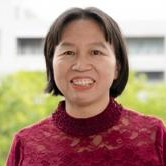Laser Beam Propagation and Control
A special issue of Photonics (ISSN 2304-6732). This special issue belongs to the section "Lasers, Light Sources and Sensors".
Deadline for manuscript submissions: 20 September 2024 | Viewed by 4892
Special Issue Editor
Interests: beam propagation; optical trapping; optical focusing; vortex optical beams; vector optical beams
Special Issues, Collections and Topics in MDPI journals
Special Issue Information
Dear Colleagues,
Laser beam propagation and control is an interesting subject, which includes beam properties and control due to optical diffraction and can be applied in optical imaging and optical measurement. Optical diffraction, optical imaging, and optical measurement are central topics in many modern and scientific fields that are closely related and have a wide range of applications such as microscopy, telescopy, sensors, military, biological sciences, etc. Optical diffraction is the basic spatial coherence phenomenon that allows us to determine how rapidly a coherent beam spreads with distance, how fast a pulse spreads in time, and how sharply the beam can be focused, all critical in military systems. Usually, Fourier analysis and synthesis techniques are a unifying theme throughout this subject. Optical imaging uses light and special properties of photons to obtain detailed images of organs, tissues, cells and even molecules. The techniques offer minimally or non-invasive methods for looking inside the body. Optical measurement is a measurement technique that relies on the use of optical sensors to collect measurements. Generally, optical imaging is the basis of optical measurement, including optical imaging without lenses, which is an interesting subject that has many achievements and remaining challenges in wide-field on-chip microscopy, and optical measurement is a rigorous consideration of optical imaging results in a quantitative way. It is an important issue to discuss controlling the propagation properties of the laser beams, discussing the construction, propagation, measurement, and coherent control of new structured light fields, conducting in-depth research on cutting-edge scientific issues regarding the interaction between light and matter, as well as related technological hotspots and challenges, proposing original academic ideas, discovering new phenomena, revealing new physics, and promoting the cross-application of optics in fields such as information, communication, chemistry, life sciences, and materials.
This Special Issue will cover a broad field of laser beam propagation and control including the optical diffraction, advanced optical imaging and precision optical measurement technologies ranging from micro to macro, from static to dynamic, and from single physical quantity to multiple. This subject is looking forward to building a bridge among optical scientists, engineers and entrepreneurs.
Prof. Dr. Dongmei Deng
Guest Editor
Manuscript Submission Information
Manuscripts should be submitted online at www.mdpi.com by registering and logging in to this website. Once you are registered, click here to go to the submission form. Manuscripts can be submitted until the deadline. All submissions that pass pre-check are peer-reviewed. Accepted papers will be published continuously in the journal (as soon as accepted) and will be listed together on the special issue website. Research articles, review articles as well as short communications are invited. For planned papers, a title and short abstract (about 100 words) can be sent to the Editorial Office for announcement on this website.
Submitted manuscripts should not have been published previously, nor be under consideration for publication elsewhere (except conference proceedings papers). All manuscripts are thoroughly refereed through a single-blind peer-review process. A guide for authors and other relevant information for submission of manuscripts is available on the Instructions for Authors page. Photonics is an international peer-reviewed open access monthly journal published by MDPI.
Please visit the Instructions for Authors page before submitting a manuscript. The Article Processing Charge (APC) for publication in this open access journal is 2400 CHF (Swiss Francs). Submitted papers should be well formatted and use good English. Authors may use MDPI's English editing service prior to publication or during author revisions.
Keywords
- beam propagation
- optical diffraction
- advanced optical imaging
- precision optical measurement





